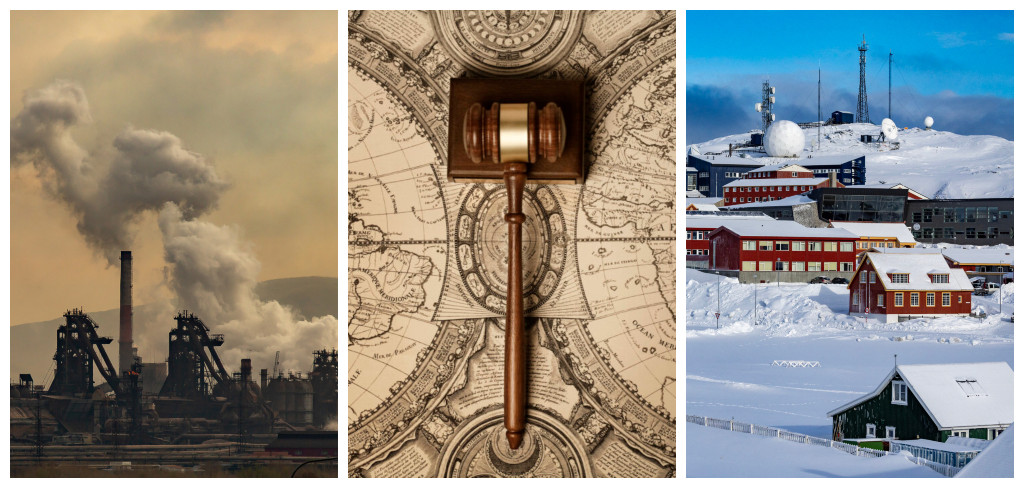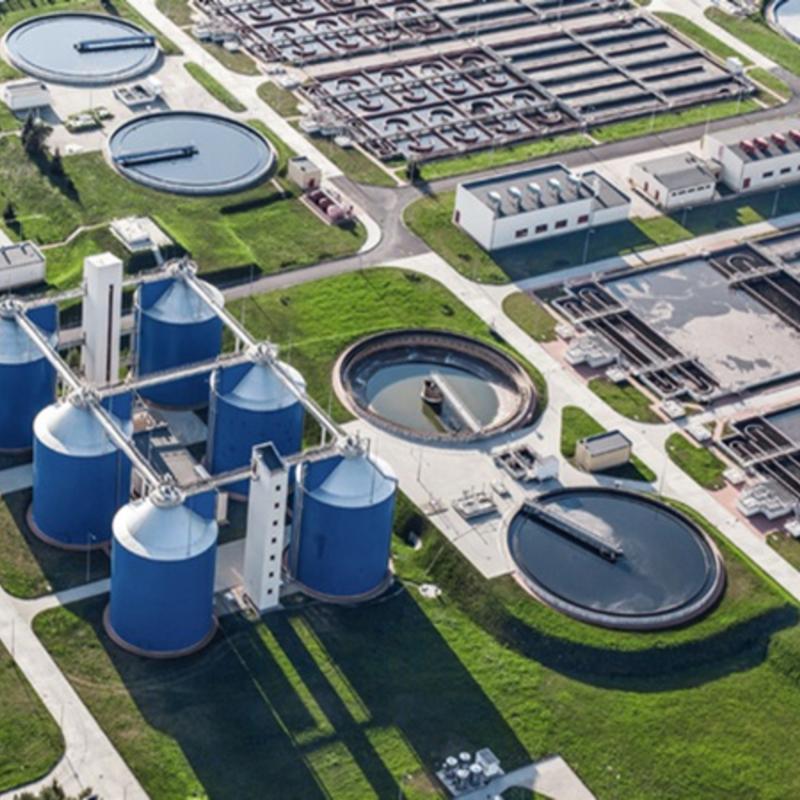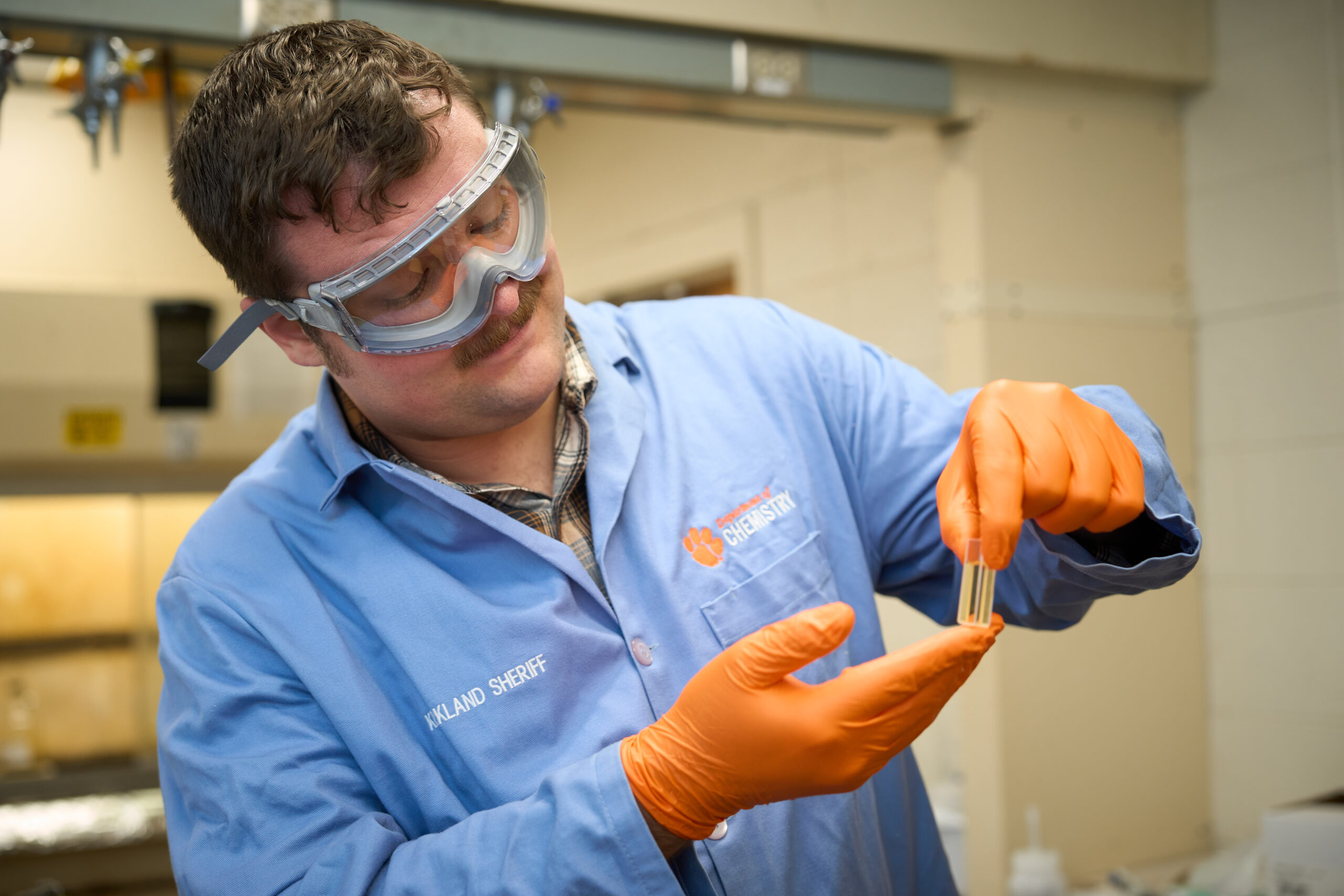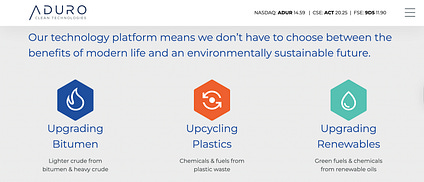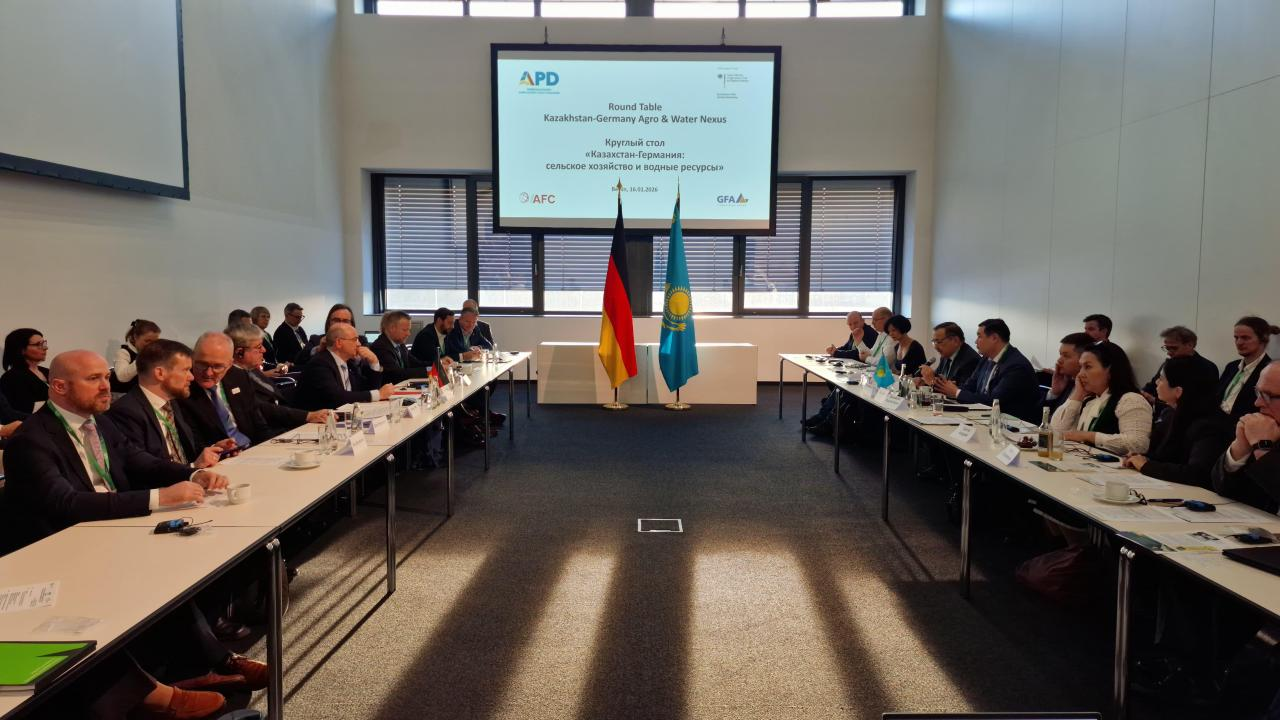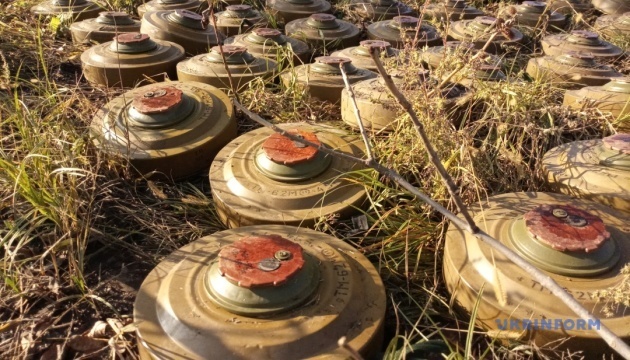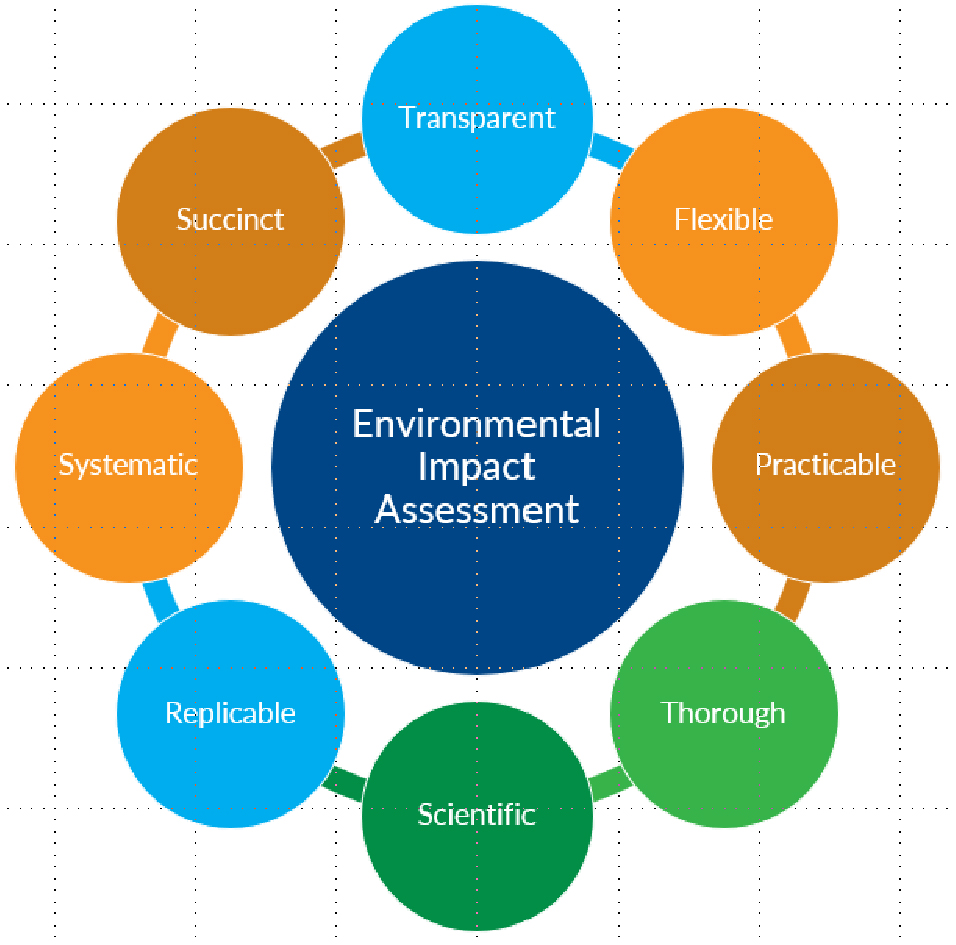Membrane-based carbon capture: Recent progress, challenges, and their role in achieving the sustainable development goals
The rapid growth in the consumption of fossil fuels resulted in climate change and severe health issues. Among the different proposed methods to control climate change, carbon capture technologies are the best choice in the current stage. In this study, the various membrane technologies used for carbon capture and their impact on achieving sustainable development goals (SDGs) are discussed. Membrane-based carbon capture processes in pre-combustion and post-combustion, which are known as membrane gas separation (MGS) and membrane contactor (MC), respectively, along with the process of fabrication and the different limitations that hinder their performances are discussed. Additionally, the 17 SDGs, where each representing a crucial topic in the current global task of a sustainable future, that are impacted by membrane-based carbon capture technologies are discussed. Membrane-based carbon capture technologies showed to have mixed impacts on different SDGs, varying in intensity and usefulness. It was found that the membrane-based carbon capture technologies had mostly influenced SDG 7 by enhancement in the zero-emission production, SDG 9 by providing 38–42% cost savings compared to liquid absorption, SDG 3 through reducing pollution and particulate matter emissions by 23%, and SDG 13, with SDG 13 being the most positively influenced by membrane-based carbon capture technologies, as they significantly reduce the CO2 emissions and have high CO2 capture yields (80–90%), thus supporting the objectives of SDG 13 in combatting climate change.
1. Introduction
The rapid growth of the population and the progression of industries across various sectors have propelled the need for fossil fuels drastically during the last century (Poblete et al., 2022). Fossil fuel has the leisure of providing intensive amounts of energy through combustion processes to accommodate various applications with lucrative performance parameters and efficiencies. However, there are adverse effects that accompany the usage of fossil fuel, transportation modes such as air or ocean freight (van Fan et al., 2018), and domestic power consumption (Bastida et al., 2019) with the emission of greenhouse gasses that contribute to global warming being of upmost concern. Furthermore, concerns regarding the quality of the environment which affects various aspects of our daily lives such as health, agriculture and water purity, have acted as a wakeup call for environmentalists across the globe to reconsider the options regarding energy resources and reduce the emissions that intensify the effects of global warming (Gopinathan et al., 2022), (Olabi et al., 2022a).
Some methods and solutions have been utilized to attenuate the effects of global warming on various scales, including laboratory and industrial scales alike. Some of the methods include the improvement of the efficiency of pre-established technologies which will reduce the amount of fuel required for their operation with the addition of waste heat recovery means (Olabi et al., 2021a), (Abdelkareem et al., 2022), implementing an effective energy management strategy, reconsidering the need for relatively subordinate devices or processes, and the integration of recycled parts in production lines to reduce the impact of material extraction throughout a product or a process's lifetime. Moreover, investing in environmentally friendly devices can have a large positive impact in the long run, such as fuel cells, and various effective cooling systems such as district cooling and absorption chillers.
Fortunately, alternative technologies such as those renewable energy based, have countered the adverse effects posed by their predecessors and can potentially significantly reduce global warming effects (Inay id="crosref1062"at et al., 2010Shahbaz et al., 2020). Technologies such as solar photovoltaics (Alami et al., 2022a), (Beni and Esmaeili, 2020) and wind turbines (Olabi et al., 2021b), (Amjith and Bavanish, 2022) have been under development for a substantial amount of time and have crossed the barrier between lab-scale and commercial applications. However, the infrastructure that is available on a global scale has yet to accommodate these technologies and utilize them as a primary source of daily operation, as well as the dependency on variable weather patterns (Chew et al., 2021).
As such, carbon capture technologies (CCT), currently pose as a favorite candidate to lessen the emissions that contribute to the worsening of global warming and climate change (de Oliveira Maciel et al., 2022a) (Abdelkareem et al., 2021)– (de Oliveira Maciel et al., 2022b), (Olabi et al., 2022b). There are three main types of carbon technologies, pre-combustion, post-combustion, power plant and industrial processes, respectively, and oxyfuel carbon capture. Additionally, membrane-based technologies, which depend on external imposed conditions such as an induced pressure difference which can be supplied from electricity generated by renewable energy technologies such as solar photovoltaic modules or wind turbines, for carbon capture have been recently put under the spotlight for the effective capture of carbon within natural and flue gasses in power plants and the purification of gas streams that exist in industrial production processes.
In 2015, the UNs “United Nations” established 17 SDGs “Sustainable Development Goals” to be reached in 2030 to achieve healthy living and a clean and safe environment sustainably (Majumdar et al., 2023), (Aljaghoub et al., 2022). Because they are designed to simultaneously improve the world's social, economic, and environmental conditions, the 17 SDGs are extremely important. To ensure that these Sustainable Development Goals are put into action, efforts on a global scale are required. Carbon capture technologies are significantly essential for combatting climate change and global warming. Nevertheless, it is important to explore the sustainability of these technologies and to check if their impacts on the environment and planet are positive. Thus, an assessment is critical to explore the positive impact membrane-based carbon capture technologies have on the achievement of the United Nations (UN) SDGs established to be accomplished by 2030. In 2021, Mikunda et al. (2021a) assessed the impacts of carbon capture and storage on the SDGs. The authors found out that carbon capture and storage can successfully attain the objectives of the SDGs. Furthermore, the authors reported that the most affected SDG by carbon capture and storage is SDG 13 which enforces the combat against climate change. Moreover, the study showed that carbon capture and storage have both negative and positive impacts on the SDGs. On a similar note, another study conducted by Olabi et al. (2022c) demonstrates that in general carbon capture technologies have significant contributions to the SDGs. However, it was found that carbon capture technologies most significantly impact SDG 7, which focuses on promoting affordable and clean energy, and SDG 13, which aims at promoting climate action. As a result, it is important to focus on membrane-based carbon capture technologies and map their contributions to the SDGs, which presents a gap in the recent research conducted in their scopes. The current work discusses the progress done in membrane-based carbon capture technologies, the challenges facing membrane-based carbon capture, and finally discusses in detail the role of membrane-based carbon capture technologies in achieving the 17 SDGs.
2. Carbon capture and membrane-based technologies
Due to the unprecedented effects of global warming, carbon capture and storage (CCS) technologies have been sought out (Abuelnoor et al., 2021), a table summarizing the advantages and disadvantages and a flow chart categorizing these technologies is shown in Table 1 and Fig. 1. CO2 separation and capture using membrane-based technologies (MBT) have been put under the spotlight as a potential candidate for large-scale CO2 capture systems. Given how energy-intensive thermal-based CO2 capture technologies are, which use energy as a mass separating agent, MBT offers a suitable alternative that can be incorporated in pre- and post-combustion stages of a CO2 emitting processes, given that maintaining the separating conditions for MBT (i.e., concentration or pressure difference), is far less energy intensive than thermal separation processes that require the addition of high amounts of energy (i.e., solvent boiling). Membranes that are used for CO2 capture have stringent requirements that need to be accounted for such as (Luis et al., 2012).
- •
High CO2 selectivity
- •
Thermal stability (∼400 " role="presentation" style="box-sizing: border-box; margin: 0px; padding: 0px; display: inline-block; font-style: normal; font-weight: normal; line-height: normal; font-size: 14.4px; text-indent: 0px; text-align: left; text-transform: none; letter-spacing: normal; word-spacing: normal; overflow-wrap: normal; white-space: nowrap; float: none; direction: ltr; max-width: none; max-height: none; min-width: 0px; min-height: 0px; border: 0px; position: relative;" tabindex="0"> C)
- •
Mechanical stability under high pressures (∼950 PSI)
Table 1. Carbon capture technologies - advantages and disadvantages.
| Empty Cell | Advantages | Disadvantages | References |
|---|---|---|---|
| Clathrate Hydrate | Can store large amounts of gas molecules such as methane, carbon dioxide and ethane | Requires high pressures and low temperatures to reach a thermodynamically stable condition of operation (∼1.3 MPA at 273.8 K) | Nagashima et al. (2016) |
| Calcium Looping | Usage of a cheap and environmentally sorbent Has been successfully implemented in pilot-scale plants from 3 kW to 1.7 MW |
Carbonation and calcination steps are heavily dependent on the high temperature requirement The deactivation of the sorbent material with the number of cycles that the particles undergo |
(Coppola and Scala, 2020)– (Cebrucean and Ionel, 2022) (Dieter et al., 2015) |
| Oxyfuel | The flue gas produced consists mainly of CO2 and H2O which are easily separated. | The high energy required to produce high-purity oxygen and the high temperature produced by combustion under the pure oxygen atmosphere | (Adams, 2014), (Miller, 2017) |

Fig. 1. CO2 capture technologies.
MBT are traced back to the unit component of hollow fibers. To obtain asymmetric hollow fibers, polymer powders are dissolved in a solvent which is then extruded to form a bundle of hollow fibers. The hollow fibers are cooled off in a water bath to set their structure. After the hollow fibers are dried and rid of any excess solvent or water, they are woven into sheets of fabric, or onto a cylindrical tube for a modular structure integration (US Patent for Loom processing, 1997), the process is shown in Fig. 2. MBT have matured through stages of suitable polymer selection for gas separation, by studying the permeability and selectivity for different membrane materials that suit different gasses, the process of synthesizing the membrane material as well as the manufacturing of modules for practical applications. However, membrane treatments for pre- and post-usage require further investigations in research and development.
Fig. 2. Membrane for gas separation fabrication.

MBT are used to separate CO2 from natural gas and flue gas returns due to their low cost of operation (while maintaining a high capital cost due to the complexity of manufacturing of the membranes), flexibility as well as modularity, which is the ability to stack up multiple membranes to increase the surface area and the interface between different phases (gas-gas, gas-liquid). Moreover, MBT requires less chemicals in comparison with other technologies (Chen et al., 2022a) as well as its ability to overcome thermodynamic limitations (Xing et al., 2021). The utilization of MBT in pre-combustion stages has the aim of separating CO2 from a CO2/H2 mixture stream and has the advantage of being used parallel to a water-gas shift unit. Post-combustion separation deals with CO2/N2 mixture streams while other MBT applications require the separation of CO2 from CO2/CH4 mixture streams (natural gas feed stream separation). The way MBT works is that the membrane allows preferential permeation of a certain gas molecule or species while acting as a blocking layer for untargeted species, with different behaviors according to the technologies in question.
Membrane gas separation (MGS) is a pre-combustion technology, such as shown in Fig. 3 that is utilized in various sectors including and not limited to the extraction of nitrogen from ambient air, hydrogen recovery from ammonia plants (Ramírez-Santos et al., 2018) as well as hydrogen recovery from hydrocarbons used in petrochemical applications, organic vapor removal from air streams and CO2 capture from natural gas streams (Membranes for Gas Separation, 2022). In this technology of CO2 capture, a feed stream containing CO2 is flown adjacent to the membrane, where gas molecules are absorbed on one side of the dense membrane, diffuse across the membrane and finally desorb on the other side to a gas end phase, such as shown in Fig. 4.
Fig. 3. Pre-combustion carbon capture.
Fig. 4. Membrane gas separation.
Two main key parameters are considered for gas separation which are the permeability of a single species in the gas mixture and the separation factor (selectivity). These two parameters share a tradeoff relationship as the separation factor has been observed to decrease with the increase of the permeability (Robeson, 2008). Which is why an upper boundary limit relationship is followed to classify and compare the performance of different membranes according to the permeability and the selectivity, which follows this equation (Robeson, 2008):(1)Where Pi is the permeability of the targeted species, k is the front factor, " role="presentation" style="box-sizing: border-box; margin: 0px; padding: 0px; display: inline-block; font-style: normal; font-weight: normal; line-height: normal; font-size: 14.4px; text-indent: 0px; text-align: left; text-transform: none; letter-spacing: normal; word-spacing: normal; overflow-wrap: normal; white-space: nowrap; float: none; direction: ltr; max-width: none; max-height: none; min-width: 0px; min-height: 0px; border: 0px; position: relative;" tabindex="0"> is the selectivity, and n is the slope of the resultant log-log graph (Robeson, 2008), just as shown in Fig. 5.
Fig. 5. CO2 upper bound limit plot (Robeson, 2008), (Park et al., 2007), data adapted from (Park et al., 2007) – Alpha: represents the CO2 selectivity.
Fig. 5 shows the relationship between the permeability of CO2 (log-scale X-axis) and the selectivity of the membrane (log-scale Y-axis) and it shows the tradeoff between increasing one side and the effect it bears on the other. Having a largely permeable membrane arrangement decreases the selectivity and the purity of the output stream of the membrane. It is also observed that through development of membrane materials for gas separation applications, the upper bound limit has been shifted slightly upwards, leaving room for membranes to attain both better permeability and selectivity. What the upper bound limit also indicates, is that for a specific material and a given selectivity, the permeability can be increased to right of the X-axis until it reaches the upper bound limit, where it is no longer physically possible for that given selectivity, and vice versa. An ideal position on the graph would be on the right-middle region of the canvas on the boundaries of the upper bound limit. Additionally, there are membrane materials that have facilitated the surpassing of the Robenson upper bound limit, such as thermally rearranged polymers. It is noted that these polymers are fabricated by in-situ thermal conversion of polyimides with ortho-functional groups. Thermally rearranged polymers suffer from the incapability of being processed, however their precursors are easily dissolved in organic solvents, which allows for their fabrication into hollow fibers/membranes. These membranes are thermally, mechanically, and chemically stable, along with lucrative gas separation abilities (Kim and Lee, 2012).
There are various materials that have been synthesized for CO2 capture. Polymer of Intrinsic Microporosity (PIM-1) is a polymer that can be synthesized at both high temperature and short time (∼180 °C – 2 h) or low temperature long time (∼70 °C–96 h) (He et al., 2022)– (BUDD et al., 2008), Foster et al., 2020, which strongly affects the molecular weight and chain packing that influences the gas permeability and selectivity of the fabricated membrane. PIM-1 can be incorporated with additives such as a metal-organic framework (MOF) nanosheets, due to their good porosity and crystalline structure, to form a mixed matrix membrane (MMM) (Zhang et al., 2019). MOF is an organic-inorganic hybrid crystalline porous material which comprises of metal ions that are surrounded by organic molecules (linkers) (MOF Metal Organic Framework, 2022), and due to its high surface area, high CO2 uptake and porosity, it facilitates a good CO2 separation, with a wide variety of materials that can be used (Ahmad et al., 2018)– (Li et al., 2021a). Carbon based membranes (carbon hollow fibers (CHF)) are also used for CO2 gas separation due to their high permeability and selectivity in comparison to other present MOF-based technologies (Ali et al., 2019)– (Lei et al., 2020). PIM-1-based membranes maintained high permeability values at high and low pressures, and a higher CO2 selectivity for CO2/N2 and a relatively lower selectivity for CO2/CH4 mixtures as shown in Table 2. Moreover, MOF-based membranes showed better CO2 selectivity performances at both low and high pressures ranging from 100 to 800 at 0 bar and 100–400 at 40 bar. Carbon molecular sieves (CMS) show a relatively higher selectivity for CO2 in a CO2/CH4 mixture, however at the cost of temperatures reaching 1000 " role="presentation" style="box-sizing: border-box; margin: 0px; padding: 0px; display: inline-block; font-style: normal; font-weight: normal; line-height: normal; font-size: 14.4px; text-indent: 0px; text-align: left; text-transform: none; letter-spacing: normal; word-spacing: normal; overflow-wrap: normal; white-space: nowrap; float: none; direction: ltr; max-width: none; max-height: none; min-width: 0px; min-height: 0px; border: 0px; position: relative;" tabindex="0"> C.
Table 2. CO2 permeability and selectivity results for different membrane gas separation technologies and feed gasses.
A membrane contactor (MC) is mostly a post-combustion-based technology, such as shown in Fig. 6, which separates gaseous and liquid phase materials and provides a higher surface area to promote a better mass transfer between the two. It is a highly flexible technology due to the freedom in controlling the flowrates of both the gas and liquid (absorbent) that are separated. MC also provides a controllable interfacial area that can be modified according to each application. As the case in MGS, MC can also be modulated for more demanding processes and to accommodate scaling-up requirements. Chemical, thermal and mechanical stabilities are essential to maintain high performance and ensure the longevity of the membrane that is used. Given that this membrane is utilized in a wet environment (an absorber in the liquid phase), the membrane material must have a high level of hydrophobicity. According to (Siagian et al., 2019), (Nieminen et al., 2020), polytetrafluorethylene (PTFE), polyvinylidene fluoride (PVDF), Polyethersulfone (PES) and polypropylene (PP), are desirable materials for membranes in MC applications. The process for MC CO2 capture is shown in Fig. 7
Fig. 6. Post-combustion carbon capture.
Fig. 7. Membrane contactor CO2 capture.
The two parameters that define the membrane in such a system are the pore size and porosity. Moreover, given that the main focus of this technology is to separate a specific species of gas in a gas mixture through its permeation within the membrane, the pores of the membrane must be hydrophobic, to not elevate the values of mass transfer resistance and to allow for a better gas/absorbent mass transfer at the pores’ boundaries. The mass transfer of CO2 is given in the following equation (Luis et al., 2012):(2)" role="presentation" style="box-sizing: border-box; margin: 0px; padding: 0px; display: inline-block; font-style: normal; font-weight: normal; line-height: normal; font-size: 14.4px; text-indent: 0px; text-align: left; text-transform: none; letter-spacing: normal; word-spacing: normal; overflow-wrap: normal; white-space: nowrap; float: none; direction: ltr; max-width: none; max-height: none; min-width: 0px; min-height: 0px; border: 0px; position: relative;" tabindex="0">Where 1/kOverall is the overall mass transfer resistance, and " role="presentation" style="box-sizing: border-box; margin: 0px; padding: 0px; display: inline-block; font-style: normal; font-weight: normal; line-height: normal; font-size: 14.4px; text-indent: 0px; text-align: left; text-transform: none; letter-spacing: normal; word-spacing: normal; overflow-wrap: normal; white-space: nowrap; float: none; direction: ltr; max-width: none; max-height: none; min-width: 0px; min-height: 0px; border: 0px; position: relative;" tabindex="0"> is the logarithmic mean difference of the concentrations of CO2 entering and leaving the MC.
Contrary to MSG technologies, the selectivity that controls the separation of a certain species over the other has no relation to the membrane material, rather than the properties of the absorbent that is used. Furthermore, given that this technology is mainly used in post-combustion processes, the transition of the CO2 molecules from the gas stream to the absorbent stream does not drastically affect the flow rate of the flue gas. Table 3 shows the effect of MC material, absorbent, gas flow rate and liquid flow rate on the CO2 removal efficiency. PTFE-based MC achieved CO2 removal efficiencies bordering 98% with water-based solvents, whereas it reached efficiencies as close to 99.97% with the utilization of ionic liquids (IL) within the water solvent, and deep euticitc solvents (Saeed et al., 2021), (Ishaq et al., 2020). PVDF, PES, PP and commercial ceramic membranes (CCM) harbor eficiencies of 98–99%.
Table 3. CO2 removal efficiencies based on different factors.
2.1. Membrane gas separation (MGS)


2.1.1. Physical limitation and operation

2.1.2. Applications
Membrane
Gas Mixture
CO2 Selectivity
CO2 Permeability (GPU)
References
PIM-1
–
–
7510 " role="presentation" style="box-sizing: border-box; margin: 0px; padding: 0px; display: inline-block; font-style: normal; font-weight: normal; line-height: normal; font-size: 12.6px; text-indent: 0px; text-align: left; text-transform: none; letter-spacing: normal; word-spacing: normal; overflow-wrap: normal; white-space: nowrap; float: none; direction: ltr; max-width: none; max-height: none; min-width: 0px; min-height: 0px; border: 0px; position: relative;" tabindex="0"> 200
Balçık et al. (2021)
PIM-1 22% DMAc
7510 " role="presentation" style="box-sizing: border-box; margin: 0px; padding: 0px; display: inline-block; font-style: normal; font-weight: normal; line-height: normal; font-size: 12.6px; text-indent: 0px; text-align: left; text-transform: none; letter-spacing: normal; word-spacing: normal; overflow-wrap: normal; white-space: nowrap; float: none; direction: ltr; max-width: none; max-height: none; min-width: 0px; min-height: 0px; border: 0px; position: relative;" tabindex="0"> 200
PIM-1 33% DMAc
9530 " role="presentation" style="box-sizing: border-box; margin: 0px; padding: 0px; display: inline-block; font-style: normal; font-weight: normal; line-height: normal; font-size: 12.6px; text-indent: 0px; text-align: left; text-transform: none; letter-spacing: normal; word-spacing: normal; overflow-wrap: normal; white-space: nowrap; float: none; direction: ltr; max-width: none; max-height: none; min-width: 0px; min-height: 0px; border: 0px; position: relative;" tabindex="0"> 110
PIM-1
N2/CO2
10@0 bar - ∼40@50 bar
7000 @ 0 bar - 5000@50 bar
Pu et al. (2022)
NUS-8-NH2/PIM-1 13.2% loading
N2/CO2
20@ 0 bar - ∼40 @ 50 bar
10,000@0 bar - 7000@50 bar
PIM-1
CH4/CO2
13@0 bar - 6@50 bar
∼6000 @ 0 bar - 2000@ 50 bar
NUS-8-NH2/PIM-1 13.2% loading
CH4/CO2
13@0 bar - 7@ 50 bar
11,000@0 bar- 6000 @ 50 bar
PIM-1-MOF-74-Ni based TFC (wt% 5 and 20)
N2/CO2
34–20
4600–6000
Liu et al. (2020)
PIM-1-NH2-UiO-66 based TFC (wt% 5 and 20)
N2/CO2
30–17
4900–8200
PIM-1/Matrimid (10:90)
Bore fill (95/5 N-methyl-2-pyrrolidone (NMP)/WaterCH4/CO2
20.1
277
Yong et al. (2013)
PIM-1/Matrimid (10:90)
Bore fill (80/20 (NMP)/Water)CH4/CO2
21.5
11.3
Ni-4PyC (MOF)
80H2/20CO2
300@10 bar–250@40 bar
–
Nandi et al. (2015)
60H2/50CO2
250@10 bar–200@40 bar
Mg2 (dobdc)
80H2/20CO2
800@0 bar–400@ 40 bar
–
Herm et al. (2011)
Cu-BTTri
100@0 bar–100@40 bar
MOF-177
7.5@0bar–7.5@40 bar
Co(BDP)
2.5@0bar–7.5@40 bar
Be-BTB
5@0 bar–5@40 bar
SBFDA-DMN (Carbon Molecular Sieve) Membrane
CO2/CH4
14.4
4700
Ma et al. (2015)
SBFDA-DMN - Different Pyrolysisi Temperatures for CMS formation
CO2/CH4
21@ 550 C
1475@1000C1500@550
30@1000cHazazi et al. (2019)
He/CO2
0.3@550
3.25@1000–
CHF (Carbon hollow fiber)
CO2/CH4
6
1.5E-04
Haider et al. (2018)
MCHF (Modifiied “pore tailored")
249
7.748
2.2. Membrane contactor (MC)


2.2.1. Physical operation and applications
MC
Gas Mixture
Absorbent
CO2 Removal Efficiency
Gas Flow Rate
Liquid Flow Rate
References
PTFE Hollow fiber membrane contactor (HFMC)
80 N2:20 CO2
0.8–2 M NaOH – water
Up to 90.8%
–
–
Ruan et al. (2022)
88.36%–57.99%
0.2–0.8 L/min
70.11%–74.55%
–
20–200 ml/min
85 N2:15 CO2
ILs in water 50:50 vol/vol
Khan Swati et al. (2022)
PTFE
[EMIM][EtSO4]
84.67%
–
–
[EMIM][Ac]
84.81%
[EMIM][TFA]
92.64%
[EMIM][TF2N]
94.06%
[BMIM][BF6]
98.9%
[OMIM][BF4]
99.97%
PVDF
[EMIM][EtSO4]
84.86%
[EMIM][Ac]
88.39%
[EMIM][TFA]
92.86%
[EMIM][TF2N]
94.21%
[BMIM][BF6]
99.2%
[OMIM][BF4]
99.67%
PES
[EMIM][EtSO4]
82.79%
[EMIM][Ac]
87.19%
[EMIM][TFA]
93.16%
[EMIM][TF2N]
94.5%
[BMIM][BF6]
98.53%
[OMIM][BF4]
98.79%
PP
[EMIM][EtSO4]
80.83%
[EMIM][Ac]
85.2%
[EMIM][TFA]
89.73%
[EMIM][TF2N]
93.02%
[BMIM][BF6]
97.59%
[OMIM][BF4]
99.08%
PTFE
60 CH4:40 CO2
Water
98.12%
Gas Velocity 0.093 m/s
Liquid Velocity 0.034 m/s
Li et al. (2021b)
PP
Air + 2% H2S + 2% CO2
NaOH in water
100%–10% for 0 and 1 saturation levels
–
–
Petukhov et al. (2022)
Commercial Ceramic Membrane
80 N2:20 CO2
Monoethanolamine
98%
8 L/min
200 L/min
Zhang et al. (2021)
65%
12.5 L/min
87%
13.5 L/min
87%
13.5 L/min
200 L/min
97%
325 L/min
98%
450 L/min
3. Challenges faced by carbon capture using membrane technologies
The challenges that are faced by membranes that hold back their commercialization and hinders the optimum quality of their application in carbon capture systems are summarized into three categories, economic and financial, technical, and social, which are summarized in the following section (see Fig. 8).
Fig. 8. Economic, technical and social challenges that are posed for membrane CO2 capture technologies (Luis et al., 2012), (Siagian et al., 2019), (Scholes, 2020), (Favre, 2011).

3.1. Economic and financial
There is a physical tradeoff between the selectivity and permeability in MGS-based carbon capture, which affects the overall economics of the system. Additionally, the permeability and selectivity of the membrane determines the area required for the membrane which directly affects the cost at large-scale implementation of this technology. Moreover, a phenomenon known as plasticization, which is a membrane pore swelling, halts the operation of MGS are requires costly substitutions of the membrane stack (Luis et al., 2012). A stable MC operation is dictated by the solvent membrane interaction and their compatibility, otherwise an imminent wetting of the membrane occurs that demands a substitution of both components. Similarly, fouling which is the accumulation of dust and contaminants (i.e., flue gasses), also requires the substitution of the membrane (Scholes, 2020).
3.2. Technical
The permeability and selectivity tradeoff arises as a barrier in the context of dictating the operating levels of the overall inlet and outlet of the system (pressure difference applied). Additionally, plasticization limits the choices of membrane materials as this selection must be optimized to accommodate certain applications based on the corrosivity of the environment and the mixture of the gas (Luis et al., 2012). However, it is worthy to note that the fabrication of S-PEEKM-based membranes which are made from the direct polymerization of sulfonated monomers (Khan et al., 2011a), have shown excellent anti-plasticization properties with superior gas separation performances (Khan et al., 2011b). Moreover, in an MC operation, the solvent/membrane interactions have to be chemically stable and must go through an optimization process for a smooth operation. fouling treatment techniques must be developed and regular maintenance of the membrane material is required (Scholes, 2020), (Favre, 2011).
3.3. Social
In an MGS pre-combustion operation, the selectivity of the membrane determines the loss of important gas species such as CH4 in a gas mixture with CO2, as the tradeoff between the permeability and selectivity will hinder the quality of the fuel (CH4) which will adversely affect the environment (Luis et al., 2012), (Robeson, 2008). Similarly, plasticization hinders the quality of the CO2 gas purification process over time (Siagian et al., 2019). On the other hand, in MC applications commonly used solvents pose health and safety hazards for both the environment and the people involved in the operating plants such as mono-chlorobenzene (CB) and dimethylformamide (DMF) (Luis et al., 2012)., (Favre, 2011)
4. Role of membrane-based carbon capture technologies in achieving the sustainable development goals (SDGs)
The following section discusses in detail the positive or negative contributions of membrane-based carbon capture technologies to the 17 SDGs.
It was estimated that about 10% of the population was living in poverty in 2015. However, after the recent COVID-19 pandemic it was evident that the number of people living in severe poverty will increase. Hence, nowadays more than 10% of the global population is suffering from severe poverty. That is more than 700,000 people are incapable of meeting their basic needs in life such as education, health, and food. Around 17.2% of these people are living in rural areas where people earn a living of less than 1.90$ per day. As a result, 8% of the people with low income are struggling with extreme poverty. It was reported that one child out of five children suffers from severe poverty. Consequently, in order to protect these children, global poverty must be reduced. In the past, the number of people living in extreme poverty decreased from 36% to 10% of the global population. This reduction indicates that it is possible to significantly reduce global poverty (Nationsa). For this reason, SDG 1 has been directed to end worldwide poverty in all its forms everywhere by the year 2030 (Oliveira et al., 2022). SDG 1 is associated with several targets, where each target is allocated with multiple indicators. These indicators provide guidance on how to accomplish each target related to SDG 1.
Membrane-based carbon capture can bestow numerous advantages by capturing the CO2 in the atmosphere and combatting climate change. Nevertheless, it is not feasible to deploy carbon capture technologies in underdeveloped and developing countries with low incomes. According to target 1.3 which focuses on nationally appropriate social protection systems and measures for all, it is only possible to deploy nationally suitable social protection systems. Hence, it is not appropriate to employ carbon capture technologies in such countries where they cannot afford the high costs associated with the development and implementation of these technologies. However, there are other positive aspects to the deployment of carbon capture technologies on the poverty levels in developing countries. The development and implementation of carbon capture technologies require large sums of money which can be externally financed. This, in return, allows for the development of innovative energy solutions without any incurred costs (Olfe-Kräutlein, 2020a). On the other hand, the deployment of such technologies in developed countries might indirectly deter the goal of ending worldwide poverty. This occurs as these technologies evolve and advance in developed countries which in return might strengthen the current level of global poverty (Dollar, 1993).
Job creation is one of the significant advantages carbon capture projects provide. As huge investments and finances are offered for deploying carbon capture projects, more job opportunities will be available. Hence, carbon capture technologies reduce unemployment levels and improve human well-being. Based on the International Energy Agency (IEA), by the year 2050, around 2000 carbon capture storage plants need to be built to combat the increasing carbon emissions (Birol, 2010)– (Jarraud and Steiner, 2012). The construction, operation, and development of these plants will require around 100,000 employees by the year 2050. Jobs related to logistics and transportation, material and machine supplies, and various other jobs will be created. These jobs will eventually substantially reduce the unemployment rate and decrease poverty (Olabi et al., 2022d). Moreover, according to Turner et al. (2021), the development of carbon capture technologies and facilities will add 1.8 billion dollars in GDP per year and create around 17,000 jobs in the UK (Turner et al., 2021).
Frequently, carbon capture products in the industrial processes are not engaged directly in the production of food and the difficulties associated with it, as demonstrated by SDG 2. However, the following applications lead to increasing impact on food production in the future, such as taking advantage of the captured CO2 to increase organic process yield, either in greenhouses or processed into fertilizers. This could be important for some agricultural industries, as using CO2 could enhance yields by up to 30%, which would have an immediate impact on commercial volumes and supplies. Some examples of utilizing CO2 for food production include Omega 3 which is produced by the Norwegian business CO2Bio for fish food and using CO2 by the Finnish company Solar Foods to develop proteins for human diets (Olfe-Kräutlein, 2020b). Through higher soil organic carbon (SOC) content in the soil, organic farming immediately improves biological resources. In comparison to traditional farming, organic farming provides 50% more crops on average, has better soil fertility, less soil erosion, healthier crops, and superior farm management abilities (Onwonga, 2019).
Ensuring and promoting the health and well-being of all people of all ages is significantly important for sustainable development. Prior to the COVID-19 pandemic, significant progress was sustained in enhancing the health of numerous people. Several targets were allocated to increase life expectancy and hinder the spread of diseases. However, further efforts are required to completely inhibit the spread of diseases and address all health problems. This is feasible by investing more in health facilities and systems, enhancing sanitation, and offering smooth access to health employees (Nationsb). Hence, SDG 3, which promotes the health and well-being of all people, has been put forth to establish clear targets and indicators for achieving all the former objectives.
Membrane-based carbon capture technologies do not directly influence some of the SDG 3 targets, such as targets 3.1 and 3.2 which discuss the reduction in worldwide maternity mortality rates and the end of numerous diseases, respectively. Nevertheless, several technologies employed for CO2 capture adversely influence the health and well-being of people. For instance, CO2 separation utilizes amine scrubbing which might potentially lead to several health complications (Dautzenberg and Bruhn, 2013). Moreover, mineralization processes require waste materials that might contain hazardous elements such as heavy metals (Sanna et al., 2014), (Masson-Delmotte et al., 2018b). Additionally, based on the location of the carbon capture facility, the transportation of CO2 stored in pipelines poses a risk to the surrounding residents. Even though the risk of CO2 leakage is low, where it is estimated that lower than 0.0008% of CO2 will be leaked in 10,000 years (Alcalde et al., 2018), the public still perceives this as a potential danger to society (Lyons et al., 2021). However, even small amounts of CO2 leakage from geographical locations near aquatic mediums might contaminate rivers, soil, lakes, air, and clean water which in turn leads to adverse impacts on the ecosystem and the people's health (Li and Liu, 2016), (Wei et al., 2016). Where it has been reported that the emissions of carbon capture technologies cause a 10-fold increase in the toxins found in freshwater (Chen et al., 2022b). On the other hand, there are positive impacts of membrane-based carbon capture technologies on SDG 3. These positive effects include the usage of stored CO2 for producing sustainable pharmaceutical products (Olfe-Kräutlein, 2020b). Moreover, carbon capture technologies reduce particulate matter, CO2, SO2, and NO2 pollutants from the atmosphere. The availability of these pollutants in the atmosphere has led to various health issues for people, most specifically related to respiratory diseases (Shaw et al., 2018). Particulate matter emissions only have led to the mortality of around 2804 to 8249 people in 2010 and approximately 9870 and 23,100 people in 2020. However, according to Yang et al. (2021), the deployment of carbon capture technologies helps in mitigating air pollution; this, in return reduces the global mortalities associated with pollution and particulate matter emissions by 23%, which means around 289,000 people will be saved between the year 2015 and 2030.
In order to meet the requirements of SDG 4's targets, which include guaranteeing free, equitable, and high-quality education for boys and girls (target 4.1) and equal opportunities for men and women to higher education (target 4.3), authorities, mainly nations and regions, and their organizations, are also needed to enhance the educational situation in their areas of accountability (Olfe-Kräutlein, 2020b). Developing and implementing carbon capture technologies call for specialized knowledge in a variety of academic fields and industries. There is an indirect relationship with SDG 4 by employing students and trainees in carbon capture-related learning processes to help provide high-quality education. In addition, through transferring technology, knowledge can be made available to countries that lack the resources or infrastructure to do so (capacity building). This could be viewed as an unintentional good result (Olfe-Kräutlein, 2020b). One of the indirect positive effects of the development of the various carbon capture systems including membrane-based ones on SDG 4 is the increase in the income (SDG1) that will eventually positively affect SDG 4.
SDG 5 aims at achieving equality between both genders and empower women and girls by removing discrimination, violence, and gender inequality against women mainly in the workplace. In addition to the ability to make her own decisions and authority over her own life (Eden and Wagstaff, 2021). Carbon capture technologies including membrane-based ones are not anticipated to have any effect on achieving this goal. It is not specifically related to carbon capture and can be affected slightly by encouraging growth and development, which could then result in increasing opportunities for girls and women (Olfe-Kräutlein, 2020b).
Considerable progress has been carried out to increase access to clean water and sanitation. Nevertheless, billions of people still do not have access to clean water. Globally, one out of three people still cannot access clean and safe water, while two in five people do not have access to sanitation facilities (Nationsc). About one-third of the global population is influenced by water scarcity induced by climate change and global warming. Nevertheless, since 1990, about 2.1 billion people have gained the access to clean water and sanitation facilities. However, water scarcity is still a primary issue numerous people are facing (Sanitation Statistics - UNICEF DATA). As a result, SDG 6 was developed to focus on providing clean and safe water and sanitation for all people (Olabi et al., 2022e).
Carbon capture technologies adversely impact the achievement of target 6.3 which emphasizes the improvement of water quality through pollution reduction. The energy needed for carbon capture in power plants negatively influences the efficiency of power plants and produces pollutants and chemicals in the environment. The produced pollutants, wastes, and chemicals increase the toxicity and pollution of freshwater. On the other hand, carbon capture positively impacts target 6.4 which focuses on the sustainable increase of water utilization efficiency. This is reflected by the new designs of carbon capture technologies which lower the utilization of water (Zhu et al., 2021), (Giannaris et al., 2020). Moreover, the utilization of captured CO2 can be utilized for the removal of dissolved solids from brine water into potable water (Al‒Mamoori et al., 2017). Captured CO2 can be efficiently utilized in desalination plants for generating fresh water. However, few desalination plants employ captured CO2 due to their economic disadvantages (Cuéllar-Franca and Azapagic, 2015).
SDG 7 focuses on providing clean and affordable energy to all people. SDG 7 focuses on increasing energy efficiency, allowing for smooth accessibility to energy, and enhancing the integration of renewable energy (Rabaia et al., 2021),(Sayed et al., 2021a) (Olabi et al., 2021c). It is essential to achieve this goal as 13% of the global population does not have access to electricity. The current sources of energy lead to climate change, responsible for 60% of the total greenhouse gas emissions. Consequently, alternative energy sources which do not adversely impact the environment were explored, such as renewable energy sources, including solar energy (Alami et al., 2022b), (Maghrabie et al., 2021), wind energy (Olabi et al., 2021d), (Olabi et al., 2021e), biomass energy (Wilberforce et al., 2021), (Sayed et al., 2021b), geothermal energy (Mahmoud et al., 2021a), (Mahmoud et al., 2021b), and hydro energy (Alnaqbi et al., 2022). Since 2016, the share of renewable energy has rapidly increased, resulting in tremendous growth in solar and wind energy sources (Nationsd). Renewable energy sources on their own are not as reliable as fossil fuel power generation. Renewable energy sources require energy storage systems to account for the frequent fluctuations and intermittencies. Nevertheless, a connection between renewable energy sources and fossil fuel power generation must be made to enhance grid stability. This can be facilitated by the adoption of carbon capture and storage technologies integrated with other energy storage systems. Consequently, carbon capture technologies enhance the performance and generation of renewable energy sources. Thus, integrating carbon capture technologies have strong relations to SDG 7 (Hanak and Manovic, 2020) Furthermore, the main goal of carbon capture technologies is to enhance the production of zero-emission hydrogen and fuel. This enhancement in the zero-emission production positively contributes to SDG 7 (Lee et al., 2020). For instance, in a study conducted by khan et al. (Ali Khan et al., 2021) the usage of carbon capture technologies with steam methane reforming for hydrogen production has significantly reduced the release of emissions. Similarly, Hu et al. (2015) proposed integrating carbon capture technologies to an in-situ steam gasification hydrogen production method to enhance the production of clean and renewable energy. The proposed system helped to produce around 277.67 ml/g of hydrogen.
The main goal of carbon capture by membrane technologies is to ultimately generate clean and reliable energy sources, which in turn increases the accessibility to clean energy. The ultimate goal of carbon capture technologies is to capture CO2 from the atmosphere to limit its contribution to global warming and climate change (Olabi et al., 2022e). However, the addition of carbon technologies in conventional coal-based power plants increases the Levelized cost of electricity by 35–40%. Due to the high costs of membrane-based carbon capture, the goal of producing clean and affordable energy for all people is hindered (Rubin et al., 2015). On the other hand, the addition of carbon capture technologies to coal-based power plants ensures a reliable supply of energy. This in return satisfies the goal of sustaining an uninterrupted and consistent supply of energy to meet the required energy demand (Mikunda et al., 2021b). Nevertheless, membrane-based carbon capture technologies are energy-intensive, and this leads to a substantial reduction in combustion efficiency and inflation in the electricity price (Al-Mamoori et al., 2017). According to Song et al. (2017) the energy utilization of the mostly utilized carbon capture technology, chemical absorption, is from 2.5 to 3.5 MJ/kg CO2 (Shakerian et al., 2015), (Oh et al., 2016), while the energy utilization of membrane technology for carbon capture is 3 MJ/kg CO2 for a membrane area of 70 m2 and 3.6 MJ/kg CO2 for a membrane area of 30 m2. However, according to the European Union, the target energy utilization is only at 2 MJ/kg CO2 (Belaissaoui et al., 2012), (Dechamps and Pilavachi, 2004).
The unemployment rate in 2000 was at 6.4%, and due to global economic growth, the unemployment rate decreased to 5.6% in 2017. However, the high unemployment rate is still a global issue that must be tackled. Hence, SDG 8 was developed to promote sustainable economic growth and employment for all people. Sustainable economic growth generates job opportunities for all people (Nationse). SDG 8 revolves around the concepts of economic growth, employment rates, decent work, resource efficiency, high productivity, and environmental protection (Olabi et al., 2022e).
The significant investments and a large number of carbon capture projects have resulted in lower environmental impacts of conventional power plants, and thus in higher growth of the implemented number of power plants. Where it was witnessed that up to 65 large-scale carbon capture projects were developed by 2020. Around 38 of these projects are in the United States, 13 projects are in Europe, 10 are in Asia, and 3 are in the Middle East. The total rated capacity of these projects is 40 mt-CO2/year (Page et al., 2020). It is expected that by 2050 the rated capacity will increase to 5635 mt-CO2/year and the number of carbon capture projects is anticipated to increase to 2000 projects (de Mello Delgado et al., 2021). Furthermore, the impacts of carbon capture technologies on the economy have been thoroughly evaluated in a UK carbon capture storage investment report. The report discussed the influence of carbon capture storage technologies on the economy, job creation, and gross profits. The report indicated that carbon capture storage technologies bring numerous advantages from the imports and exports related to carbon capture storage technologies and job opportunities (Summit, 2017). Due to these advantages, the UK government decided to invest at least 780 million dollars in the promotion and advancement of carbon capture storage technologies. This investment has led to more economic growth as it opened up 3850 full-time equivalent jobs in just the first year (Turner et al., 2020). According to Franz et al. (2014), the average salary for jobs related to carbon capture technologies in the UK is around 6800 dollars per month.
The scope of SDG 9 is to encourage innovation, advance equitable and sustainable industrialization, and construct resilient infrastructure (MONTES, 2017). Developed nations have offered to help developing and undeveloped nations with their economies. Achieving sustainable economic growth, social and environmental development, and battling climate change within the context of this SDG, requires developing and underdeveloped nations for long-lasting infrastructure investments, sustainable industrial advances, and new technologies. Encouragement of sustainable industries, technical research, and innovation funding could all contribute to sustainable development (Franco et al., 2020).
Target 9.4 aims to improve efficiency in resource utilization and expand the implementation of clean, environmentally friendly technologies and industries. Achieving target 9.4 requires concentrating on forest-based ecological systems like carbon storage, watershed restoration, and outdoor leisure can boost local economies while preventing material development. Limiting carbon and other greenhouse gas emissions might not only slow down climate change but will also lessen its negative effects on the health of ecosystems, such as the increased levels of forest fires in both temperate and boreal forests and the elevated chance of the Amazon rainforest becoming unstable if certain temperature limits are exceeded (Tomaselli et al., 2019).
Carbon capture using membranes has a direct impact on infrastructure and industry. The economic effects of carbon capture may vary by area, industry, and a nation's reliance on fossil fuels (Mikunda et al., 2021c). Developed membrane materials reduce costs associated with carbon capture, which is for the membrane technology highly depends on the CO2 capture ratio. Post-combustion CO2 capture utilizing the membrane technology can have an advantage from a reduced CO2 capture ratio with a 55% drop in cost. The improvement of the membrane performance is recommended to lower the CO2 capture costs down to $20/tonne CO2. Membrane systems could one day be an eco-friendly solution for CO2 capture from power plants and other energy-intensive process sectors because they don't require chemicals, are simple to scale up, and have a comparatively low energy requirement (He, 2018a). Compared to the issues encountered with the use of liquid absorption such as corrosion and foaming, utilization of membrane technology in post-combustion carbon capture, benefits the whole process by cost savings reported as 38–42% and equipment weight reduction of 34–40% (Luliano et al., 2020).
The target of SDG 10 is to reduce inequality within and among countries. Similar to how poverty has been acknowledged as having multiple dimensions, inequality also has a social, economic, and ecological component. The negative impacts on people when inequality is (excessively) high within a nation have been the subject of extensive research in recent decades. Inequality is considered to be one of our most critical social issues (Breting-Garcia, 2021).
Carbon capture can lessen cities' carbon footprints, improve their sustainability (He, 2018b) and help in reducing inequality. For the general public, carbon capture facilities might also offer sources of revenue and employment. This contrasts with the lopsided advantage enjoyed by nations with plentiful fossil resources, which has recently affected international geopolitics. As a result, carbon capture and storage technologies may make up for the disadvantages experienced by nations and regions without independent access to fossil fuels. Together, these elements could indirectly help to lessen inequality between countries and regions (Olfe-Kräutlein, 2020b). Berdowska and Skorek-Osikowska examined the deployment of membrane carbon capture technology with a cryogenic distillation module for a 600 MW coal power plant employing oxy-combustion technology. The reference system without applying separation and compression of CO2 and with an air-fired pulverized bed boiler had an electricity break-even price of €94.5/MWh. For a membrane costing €0.7/m2, the breakeven price of power for the two technologies under consideration is €81.2/MWh. It should be noted that the effectiveness of the hybrid system is significantly impacted by the membrane selection. The membranes' permeability and oxygen selectivity determine how well the system functions and how much it costs to operate. The hybrid systems’ profitability will increase owing to the projected developments in membrane technology in the coming years. Thus, all of these factors will contribute to higher income and revenue and indirectly to reducing inequality (Berdowska and Skorek-Osikowska, 2013).
Making cities and communities, safe, resilient, and sustainable is the main goal of SDG 11. Cities contain 55% of the world's population, generate 85% of its GDP, and are yet also responsible for 75% of its greenhouse gas emissions (Vaidya and Chatterji, 2020).
Encouraging CO2-based fuel and chemical production could be seen as a step in the right direction towards creating more environmentally friendly communities and enhancing sustainability (Olfe-Kräutlein, 2020b) and leading to improved air quality (Target 11.6). Carbon capture has both favorable and unfavorable effects on the environment. The most noticeable result of carbon capture is a 60–80% reduction in greenhouse gas emissions. Lowering the climate change caused by the energy and products utilized by various cities and communities can lead to significant contributions (Olabi et al., 2022d). The sustainability of fossil fuel power plants can be improved by deploying optimal membrane carbon capture technologies that lower their energy consumption and operational expenses. According to Asadi and Kazempoor, at ideal design and operating parameters, the CO2 capture cost and energy penalties were respectively 13.1$/tCO2 and 10% by studying a multi-stage membrane system. As the CO2 content in the gas rises, the cost of CO2 capture greatly falls and CO2 removal is improved (Asadi and Kazempoor, 2022).
Around one-third, estimated as 1.3 billion tonnes of the globally produced food is wasted every year. This could potentially mean that not only are there insufficient natural sources to meet the future generation's needs but also most of the currently available resources are being wasted due to inefficient transportation and harvesting strategies. According to the UN, if the global population increases to 9.6 billion by the year 2050, the number of natural resources needed will be threefold the number of natural resources acquired from this planet. All these issues call for responsible and sustainable consumption and production practices. As a result, SDG 12 was developed to drive the need for consuming and producing natural resources without constituting any adverse effects on the planet. SDG 12 thrives on doing more with fewer resources to sustain the current resources for future generations. Furthermore, SDG 12 promotes sustainable consumption and production patterns and practices. Sustainable consumption and production significantly reduce poverty and allow for the transition towards a green and low-carbon society (Nationsf). SDG 12 thrives to enhance the adopted consumption and production practices in companies to enhance the sustainability of natural resources and deflate the waste streams that are allocated on land, water, or air.
The role of carbon capture technologies is to reduce CO2 emissions and thus contribute to target 12.4 which focuses on reducing chemical and waste released to the atmosphere. Companies can integrate carbon capture technologies to reduce CO2 emissions. Even though carbon capture technologies might generate waste into the atmosphere, the technologies reduce greenhouse gas emissions for fossil fuel plants by 75–90%. Moreover, employing carbon capture technologies in companies significantly contributes to target 12.6 which stresses the adoption of sustainable practices. On the other hand, the accomplishment of target 12.2 is hindered by carbon capture technologies. Target 12.2 strives for sustainable management and efficient utilization of natural resources. As carbon capture technologies need energy for their operation and materials for their development. These requirements reduce the efficiencies of power plants integrating carbon capture technologies. It is found that carbon capture-based power plants have efficiencies 20–25% lower than conventional coal-based power plants. Moreover, the number of materials required for fossil-fuel plants with carbon capture technologies is far superior to that of conventional fossil-fuel plants. Additionally, carbon capture operations produce chemical waste which adversely influences the environment. Hence, deploying carbon capture projects can potentially increase the produced wastes from the carbon capture process. The carbon capture process might result in the emission of ash, NOx, sulfur, and NH3. These consequences hinder the achievement of target 12.5 which focuses on reducing waste generation (Mikunda et al., 2021c). Another negative consequence of the utilization of membrane-based carbon capture technologies is the release of toxins into the environment as a result of integrating amines for membrane absorption (Li and Chen, 2005).
In 2019, the highest temperatures and the highest levels of greenhouse gas emissions were recorded. The levels of greenhouse gas emissions dropped by 6% in 2020 due to travel restrictions induced by the COVID-19 pandemic (Nationsg). However, this improvement is temporary, and levels of greenhouse gas emissions are yet to increase again when the economy starts recovering from the COVID-19 pandemic. The high levels of greenhouse gas emissions are significantly contributing to global warming and climate change. Climate change is negatively influencing the global population. Climate change is inducing changes in weather patterns, resulting in higher sea levels, and causing more frequent extreme weather conditions. Due to these negative impacts of climate change, it became imperative to take extreme measures for addressing these climate issues. In 2015, the Paris Agreement was created to focus on strengthening the global reaction to the risks of climate change by reducing global temperatures below 2 °C (Nationsg). SDG 13 has been developed to take urgent action to battle climate change and its effects.
Carbon capture technologies combat climate change by significantly contributing to the achievement of SDG 13 (Olabi et al., 2022e). After the Intergovernmental Panel on Climate Change (IPCC) Fourth Assessment Report in 2007, carbon capture technologies have been acknowledged as the primary prevention technologies for reducing CO2 emissions (IPCC, 2007). The Fifth Assessment Report of IPCC further highlighted the importance of carbon capture technologies as it was estimated that by 2100 the greenhouse gas emissions cannot be reduced below 450 ppm CO2eq without the utilization of carbon capture technologies. Additionally, the Paris Agreement of reducing temperatures by 2 °C includes carbon capture technologies as key enablers for combatting climate change by significantly reducing CO2 emissions (Rogelj et al. Masson-Delmotte et al., 2018). Through these integrations of carbon capture technologies into global and national strategies, plans, and policies for combatting climate change the accomplishment of target 13.2 becomes more feasible. Moreover, carbon capture technologies facilitate the accomplishment of target 13.1 which focuses on strengthening resilience to natural disasters related to climate change by reducing 90% of the CO2 emissions in coal-based power plants (Rubin et al., 2015). Especially, membrane-based carbon capture technologies have high CO2 capture yields (80–90%) (Mondal et al., 2012). It is essential to focus on CO2 reduction due to the high CO2 emissions from anthropogenic activities. It is estimated that the CO2 emissions from anthropogenic activities will increase to 43.22 billion tonnes by the year 2040 (Sieminski, 2013). However, carbon capture technologies are capable of capturing 33.4 million tonnes per year of CO2 by 2020 which amounts to only 0.09% of the CO2 emissions (Theo et al., 2016).
SDG 14 emphasizes the significance of ocean monitoring in a situation where major pressures are threatening the ocean's capacity to provide economic, social, and benefits to the community. Oceans are a vital part of the mechanisms that keep the Earth's ecosystems alive. With the ability to cycle 93% of the world's carbon dioxide and capture 30% of exhaust emissions, the oceans serve as the principal climate controller. Additionally, over the past few decades, the seas have absorbed 90% of the Earth's heat. The provision of services by healthy aquatic ecosystems includes water filtering, nutrient uptake, and biodiversity preservation. Concerning climate change, the oceans are becoming 10 times more acidic today than they were 65 million years ago due to the absorption of CO2 from the atmosphere, which harms marine species' welfare, calcification, growth, and diversity. The adverse effects of climate change also include changes in ocean circulation and salinity, as well as an increase in the frequency and severity of weather and climate variations (Recuero Virto, 2018). The aquatic ecosystem and life underwater can benefit significantly from carbon capture. This is mainly a result of the carbonate/bicarbonate/hydrogen system in oceans and seas, being in equilibrium with CO2 in the atmosphere (Olabi et al., 2022c).
Nature is essential to the survival of all living things as it provides oxygen and crops, and controls climatic conditions. Even though nature is key to the survival of the population, people have modified about 75% of the earth's surface, reducing the available land for nature and wildlife. As a result, about 1 million species of animals and plants are about to go extinct. Based on the Global Assessment Report about biodiversity and ecosystems, it is now imperative to take transformative actions to shield and restore nature. Nevertheless, the state of nature is rapidly deteriorating, negatively influencing the economy, food security, quality of life, health, and livelihood. The need for sustaining and protecting the nature and ecosystem has paved the way for the development of SDG 15 which highlights the criticality of life on land. SDG 15 sustainably manages ecosystems and wildlife and mitigates biodiversity loss, deforestation, land degradation, and desertification (Nationsh). SDG 15 protects life on land by reducing waste on land and promoting efficient resource utilization of forests, soil, and aquatic ecosystems.
The implementation of carbon capture technologies has positive and negative interactions with the objectives of SDG 15. Target 15.5 is positively correlated with the reduction of CO2 emissions due to carbon capture technologies. It has been estimated that by 2050, carbon capture technologies will facilitate the capture of 10 to 2.8 GtCO2 eq per year. The tremendous reductions in CO2 emissions will eventually hinder the temperature rise by 1.5–2 °C (Ramón and Guillena, 2020). Hence, carbon capture technologies capture CO2 emissions that would have been otherwise released into the atmosphere and potentially led to air and water pollution (Olabi et al., 2022e). Moreover, the reduction of CO2 emissions in the atmosphere mitigates extreme climatic changes and hence reduces biodiversity loss (Mikunda et al., 2021c). On the other hand, carbon capture technologies are negatively influencing the objectives of target 15.1 which promotes sustainable usage of terrestrial and inland freshwater ecosystems. Carbon capture technologies have high utilization of energy (as mentioned in SDG 7); this, in return results in the production of wastes, pollutants, and chemicals that could spread to nearby water bodies. Other than polluting water bodies, carbon capture technologies have high water consumption, these technologies generate wastewater due to the toxins and heavy metals intoxicating the water (Oreggioni et al., 2017), (Chisalita et al., 2019).
SDG 16 is more than just a moral agenda, and it is also more than just developing technical capability. It outlines the key responsibility for covering both the purpose of institutions and their philosophy and reasoning place politics at the center of institutions. SDG 16 reflects these issues of attitude by putting importance on both whether institutions function and how they function (OECDWhaites, 2016). SDG 16 goals are unlikely to be directly impacted by the adoption of carbon capture technologies. However, under specific circumstances, indirect beneficial impacts may happen in terms of preserving and furthering the development of a peaceful world. While wealthier countries are primarily responsible for global warming's emissions, developing countries are already taking on the majority of its effects since they are more at risk from both desertification and sea level rise. Therefore, all actions that industrialized nations do to avoid, reduce, or even harvest CO2 from the atmosphere (known as “negative emission technology,” or NET) may be viewed as actions that promote peace (Olfe-Kräutlein, 2020b).
SDG 17 demands funding the international alliance for achieving sustainable development on a global scale. In order to carry out the goals of Agenda (2030), collaborations between the public, private, and civil society must be strengthened. It will also be necessary to improve the coordination of policies and actions both locally and globally and to increase international collaboration. SDG 17 calls for efforts to strengthen the abilities for achieving the SDGs and fulfil these requirements (Maltais et al., 2018).
Working with another commercial, governmental, and municipal entities or authorities is a requirement of carbon capture projects. Along with this cooperation, the project management team should budget the necessary funds and take into account how to connect firm policies with the SDGs. Defining and carefully monitoring related metrics is also necessary. All businesses may contribute to the SDGs as part of their sustainable development goals, regardless of the size of their respective industries. On the one hand, although the scope and size of the global targets are unmatched, there are several fundamental aspects that any firm may still contribute (Olabi et al., 2022e). SDG 17 calls for extra assistance from the developed countries to the less developed ones which can include improved international collaboration in the field of carbon capture that is created to equally fulfill the requirements of less developed countries (targets 17.3 and 17.5). It is unclear whether carbon capture will positively contribute to SDG 17 due to numerous essential, possibly partially altruistic prerequisites (Olfe-Kräutlein, 2020b).
The summary of the assessment done on the contribution of membrane-based carbon capture technologies for achieving the 17 SDGs is shown in Fig. 26, which depicts the most influenced SDGs by membrane-based carbon capture technologies (see Fig. 9, Fig. 10, Fig. 11, Fig. 12, Fig. 13, Fig. 14, Fig. 15, Fig. 16, Fig. 17, Fig. 18, Fig. 19, Fig. 20, Fig. 21, Fig. 22, Fig. 23, Fig. 24, Fig. 25). The figure shows that SDGs 13, 9, 7, and 8 are the most influenced SDGs by carbon capture technologies. The CO2 reductions and the sustainable energy production by these technologies have led to great contributions to SDG 13 and SDG 7. Moreover, as carbon capture technologies are becoming more advanced, they are being adopted by more countries and institutions. These consequences lead to the creation of more jobs and significant economic growth and developments. Due to these positive impacts, SDG 8, SDG 1, and SDG 3 are perceived to be positively correlated with carbon capture technologies.
Fig. 9. Membrane carbon capture SDG 1 impact summary.
Fig. 10. Membrane carbon capture SDG 2 impact summary.
Fig. 11. Membrane carbon capture SDG 3 impact summary.
Fig. 12. Membrane carbon capture SDG 4 impact summary.
Fig. 13. Membrane carbon capture SDG 5 impact summary.
Fig. 14. Membrane carbon capture SDG 6 impact summary.
Fig. 15. Membrane carbon capture SDG 7 impact summary.
Fig. 16. Membrane carbon capture SDG 8 impact summary.
Fig. 17. Membrane carbon capture SDG 9 impact summary.
Fig. 18. Membrane carbon capture SDG 10 impact summary.
Fig. 19. Membrane carbon capture SDG 11 impact summary.
Fig. 20. Membrane carbon capture SDG 12 impact summary.
Fig. 21. Membrane carbon capture SDG 13 impact summary.
Fig. 22. Membrane carbon capture SDG 14 impact summary.
Fig. 23. Membrane carbon capture SDG 15 impact summary.
Fig. 24. Membrane carbon capture SDG 16 impact summary.
Fig. 25. Membrane carbon capture SDG 17 impact summary.
Fig. 26. The influence of membrane-based carbon capture technologies on the SDGs.
4.1. SDG 1 “no poverty”
4.2. SDG 2 “zero hunger”
4.3. SDG 3 “good health and wellbeing”
4.4. SDG 4 “quality education”
4.5. SDG 5 “gender equality”
4.6. SDG 6 “clean water and sanitation”
4.7. SDG 7 “affordable and clean energy”
4.8. SDG 8 “decent work and economic growth”
4.9. SDG 9 “industry, innovation and infrastructure”
4.10. SDG 10 “reduced inequality”
4.11. SDG 11 “sustainable cities and communities”
4.12. SDG 12 “responsible consumption and production”
4.13. SDG 13 “climate change”
4.14. SDG 14 “life below water”
4.15. SDG 15 “life on land”
4.16. SDG 16 “peace, justice and strong institutions”
4.17. SDG 17 “partnership for the goals”


















5. Conclusion
Membrane-based technologies pose as a potential candidate, in terms of commercialization, for the application of carbon capture, whether in pre- or post-combustion processes, using MGS or MC technologies, respectively. An optimized fabrication process of hollow fiber membranes allows for a financially feasible option for carbon capture applications. MGS technologies, having a gas-gas interface, harbor the leisure of determining the permeability and selectivity of the CO2 species in a gas mixture, with a tradeoff relationship between the two and adhering to the upper bound limitations, and subject to other drawbacks such as plasticization and deterioration. MC technologies utilize a more complex membrane/gas system with the addition of a solvent, resulting in a gas-liquid interface for the transportation of CO2 gas species to a suitable solvent. The operation of an MC system is subject to various limitations such as the wetting of the membrane pores, fouling and ageing, which requires a thorough optimization process. Moreover, an assessment of the role of membrane-based carbon capture technologies in achieving the 17 SDGs was carried out, which showed both positive and negative impacts accordingly. Membrane-based carbon capture technologies play a critical role in the field of generating affordable and clean energy (SDG 7). The high energy utilization has negatively influenced the main objectives of SDG 7. Furthermore, it was found that membrane-based carbon capture technologies have led to numerous job opportunities and made positive contributions to the economy. These positive impacts support the objectives of both SDG 1 and SDG 8. Additionally, membrane-carbon capture technologies play an essential role in building sustainable and innovative infrastructure developments; thus, supporting the objectives of SDG 9. Most importantly, membrane-based carbon capture technologies significantly reduce CO2 emissions and other pollutant emissions. These reductions positively adhere to the objectives of SDG 13. As a result, membrane-based carbon capture technologies have significant impacts on the 17 SDGs. Some of these impacts are quantifiable, such as in SDG 9 by providing 38–42% cost savings compared to liquid absorption, SDG 3 through reducing pollution and particulate matter emissions by 23%, and SDG 13 as membrane-based carbon capture significantly reduce the CO2 emissions and have high CO2 capture yields (80–90%), while others cannot be quantified and can only be assessed based on qualitative information. To enhance the accuracy of the assessment, it is recommended to assess the impacts of other carbon capture technologies on the SDGs and compare the results. Additionally, these assessments will create a framework for comparing carbon capture technologies based on their potential positive and negative impacts on the achievement of the 17 SDGs. The technologies must be compared based on country-specific economic, environmental, and geographic considerations.
What is Your Reaction?
 Like
0
Like
0
 Dislike
0
Dislike
0
 Love
0
Love
0
 Funny
0
Funny
0
 Angry
0
Angry
0
 Sad
0
Sad
0
 Wow
0
Wow
0













